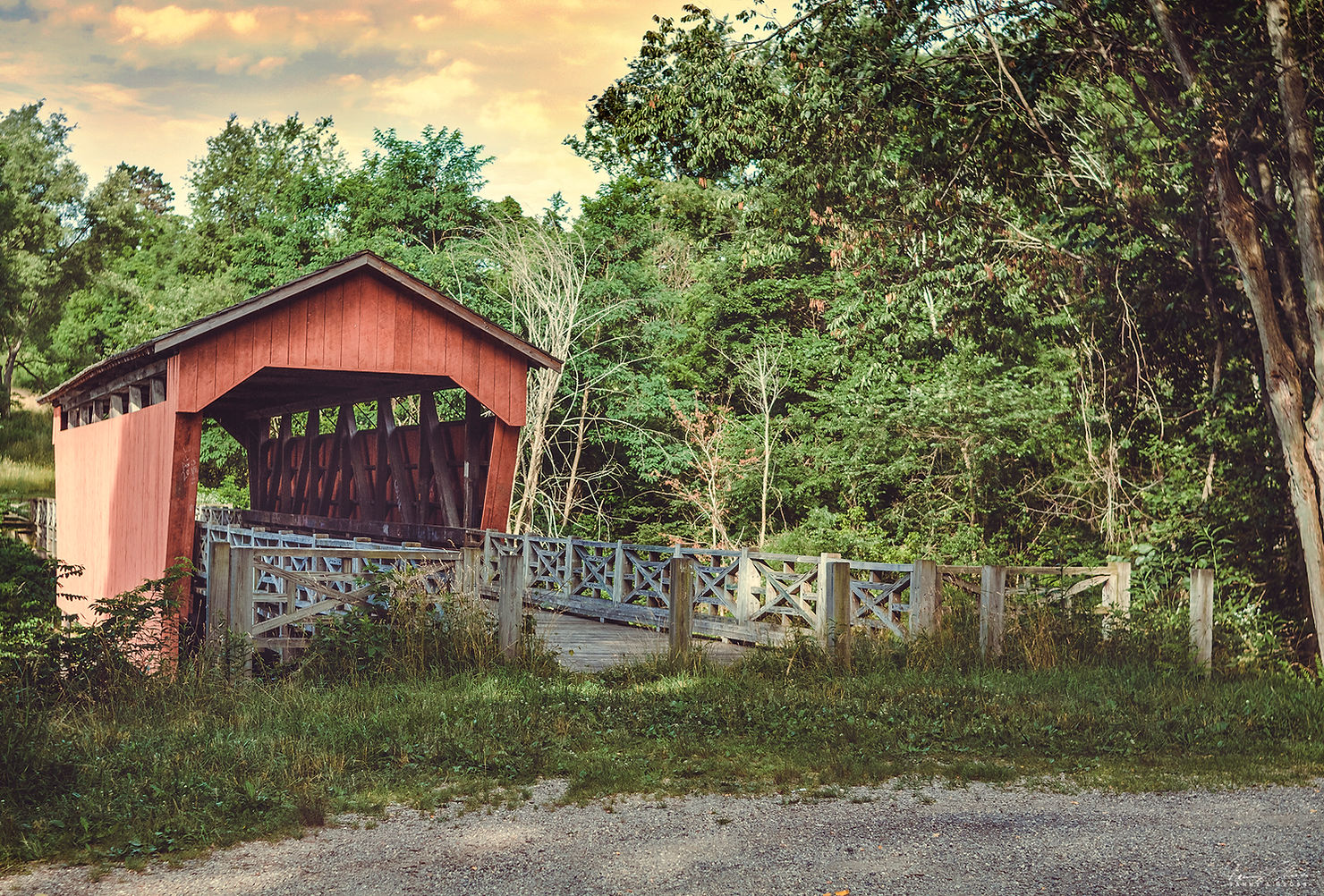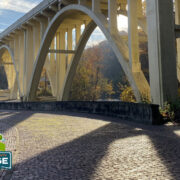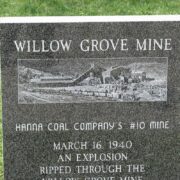
The Bridges of Belmont County

The Shaeffer Campbell Covered Bridge, located on the OUE campus, is a popular spot for photography.
Please forgive my play on the title of Robert James Waller’s novel The Bridges of Madison County. Not only does Belmont County have three beautiful bridges that the novel’s main character, Robert Kinkaid, would love to photograph, he was portrayed as a native of Barnesville, Ohio, Belmont County. In the novel, he and his parents lived on Franklin Street and he attended Barnesville schools. Journalist Jean Davies interviewed Waller about why he chose the village. Waller told her that he just blindly put his finger on an Ohio map and it landed on Barnesville.
Although he was familiar with Ohio, Waller may not have known that Belmont County was a very appropriate choice for bridge lovers. I think Kinkaid would appreciate these three bridges for their uniqueness and beauty, and so will you!
1. Blaine “S” Bridge, western edge of Blaine on US 40 just before starting up the Blaine Hill Viaduct. This unique bridge is Ohio’s Official Bicentennial Bridge; Ohio’s oldest bridge and longest “S” bridge. Constructed on a part of the first federally funded national highway, the 1828 “S” Blaine Hill Bridge carried early travelers over Wheeling Creek and up the western hills from the Ohio River crossings in Bridgeport, Ohio and Wheeling, West Virginia. Built of sandstone, the bridge is 345 feet in length with three arches. Its “S” shape carried travelers continually from the days of wagons to automobiles. The 1828 bridge remains the longest existing span of its type on the entire six-state Historic National Road. It is thought to be perhaps the first bridge in the Northwest Territory. It is also built upon the ancient Indian trail that became Zane’s Trace and it offers a three-tired view of three generations of American transportation history, which includes I-70 and Historic National Road.
Crumbling and in poor condition, the bridge was saved from demolition in 1999. The preservation of the bridge was made possible through a collaboration between community members and local, state, and federal government officials. In 2001, the Blaine Bridge Community Preservation Project began and by 2005 the restored site was dedicated.
Read more about Ohio’s “S” bridges https://mobilerving.com/the-buzz-articles/features/ohios-s-shaped-bridges

This view shows the top of the S Bridge and the Blaine Viaduct above it, built in 1933.
2. Great Stone Viaduct, 31st St., Bellaire. The Great Stone Viaduct served as the western approach to the former Baltimore and Ohio railroad bridge spanning the Ohio River. This site provides photographic opportunities of railroad train activity crossing the Ohio River, and a Ohio History Connection Marker at the Union Street arch.
Construction of this Great Stone Viaduct began in 1870 at Union Street as an Ohio approach to the railroad bridge spanning the Ohio River. It was completed to Rose Hill in April 1871, and the entire bridge span connecting Ohio to West Virginia, of which the Viaduct is a part, was opened to rail traffic on June 21, 1871. Jointly constructed by the Baltimore & Ohio Railroad and the Central Ohio Railroad, its sandstone piers rise in varying heights 10 to 20 feet above the streets, from which are placed 43 stone arches supported by 37 ring stones (18 on each side of a keystone) intended to symbolize a united Union consisting of 37 states. Placed on the National Register of Historic Places in 1976, this Ohio River crossing became known as the “Great Shortline to the West.”
The bridge was featured in the 2010 film Unstoppable starring Denzel Washington. Filming on the bridge in Bellaire ran from November 9 to 14, 2009.
Restoration work is currently being done on this treasured landmark and a park is planned.

3. Shaeffer Campbell Covered Bridge, off I-70 exit 213 on the Ohio University Eastern Campus. A popular spot for photography and visible from the interstate, the bridge stands east of the Ohio University Eastern Campus, I-70 Exit 213, overlooking a pond.
It was originally built in 1891 in Fairfield County and rescued from destruction in the late 1960’s. It was reconstructed on the present site in 1975. The bridge was constructed in the multiple kingpost truss style by Fairfield native and expert covered bridge builder, James W. Buchanan.
The bridge was damaged when a farm tractor fell through the floor in 1973, and it was donated to Belmont County in 1975. Belmont County did not have any covered bridges at the time, as its last covered bridge over Captina Creek had collapsed under the weight of a coal truck in 1953. The bridge was dismantled and taken to a county garage in Lloydsville, where it was reassembled and reconditioned. The bridge was placed over the College Pond in 1975 with a dedication by the county engineer, R.J. Boccabella.

A Belmont County landmark, this bridge is beautiful in every season.




